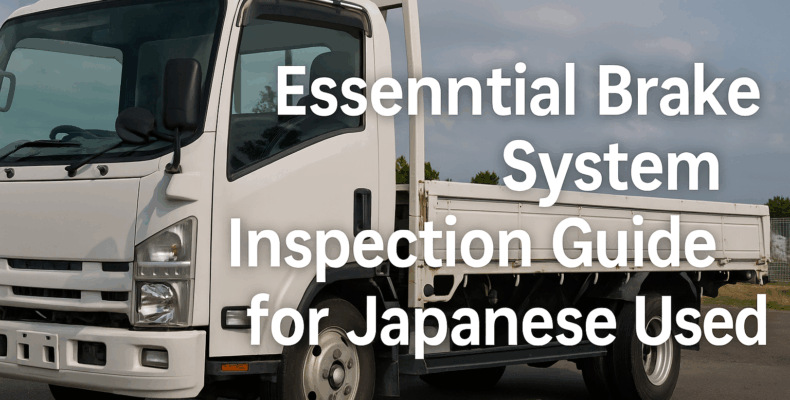Maintaining the brake system of your Japanese used truck is more than just routine—it’s a life-saving necessity. Whether you’re transporting goods in rugged terrains or navigating city streets, your brakes must always be in top shape. Fortunately, regular inspection and proper care can keep your truck safe, efficient, and reliable for years to come.
In this guide, we’ll walk you through essential brake inspection tips that every international truck owner should know, especially those using Japanese trucks from trusted brands like Isuzu, Hino, Nissan Diesel, and Mitsubishi Fuso.
Why Brake Maintenance Is Critical
Brakes are your truck’s first line of defense. Without responsive braking, even the most powerful truck becomes dangerous. Faulty brakes can lead to severe accidents, downtime, and costly repairs. That’s why routine inspections are not just recommended—they are essential.
Additionally, Japanese used trucks are known for their excellent quality. However, to enjoy their full potential, regular brake system checks are a must.
Top Brake System Inspection Tips
1. Inspect Brake Pads and Shoes
Brake pads and shoes wear out over time. If they become too thin, they can no longer stop the truck effectively.
-
Check pad thickness monthly.
-
Replace pads if they’re thinner than 3mm.
-
Listen for squealing or grinding sounds.
Worn-out pads can damage the rotors or drums.
2. Check Brake Fluid Level and Quality
Brake fluid is vital for smooth and responsive braking. It also absorbs moisture, which can reduce braking power.
-
Inspect fluid every 2 to 3 months.
-
The fluid should be clear or light amber.
-
Replace it if it’s dark or cloudy.
Also, use the correct brake fluid type for your model.
3. Inspect Rotors and Drums
Rotors and drums must be smooth and free from grooves or cracks.
-
Look for uneven wear or scoring.
-
If the truck shakes while braking, get the rotors checked.
-
Have them resurfaced or replaced if needed.
Overheating can warp these components, especially in hot climates or mountainous areas.
4. Monitor Brake Lines and Hoses
These parts transport brake fluid from the master cylinder to each wheel.
-
Look for leaks, cracks, or bulges.
-
Replace damaged lines immediately.
-
Ensure that connections are tight.
A small leak today can cause total brake failure tomorrow.
5. Test the Brake Pedal Feel
The brake pedal gives immediate feedback about the system’s condition.
-
It should feel firm, not spongy.
-
If the pedal sinks or feels soft, inspect the master cylinder.
-
Unusual resistance can indicate air in the lines or hydraulic problems.
Pay attention to how the truck behaves during every stop.
Bonus Tips for Overseas Truck Owners
-
Perform full inspections every 10,000–15,000 km.
-
Don’t delay brake repairs, even if the truck still runs.
-
Use high-quality OEM parts for replacements.
Moreover, if you’re sourcing a Japanese used truck, it’s important to begin with a solid vehicle. Choosing a trustworthy exporter makes all the difference.
Choose Reliable Exporters for Safer Trucks
The best way to ensure a truck’s brake system is in good condition is by buying from a trusted source. Many exporters claim quality—but only a few deliver it.
👉 Top 5 Trusted Japanese Used Truck Exporters for Global Buyers
This article lists five exporters with proven track records and well-maintained inventory. Start your journey safely with the right partner.
